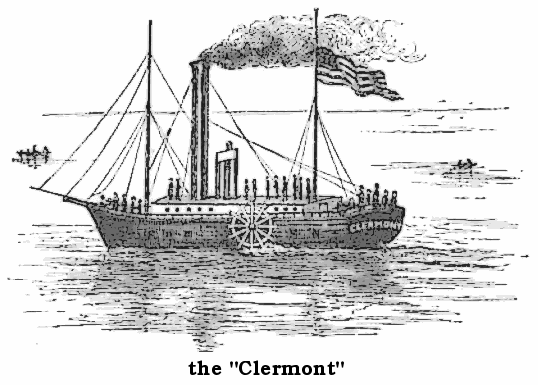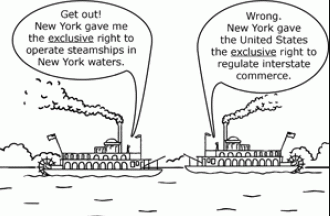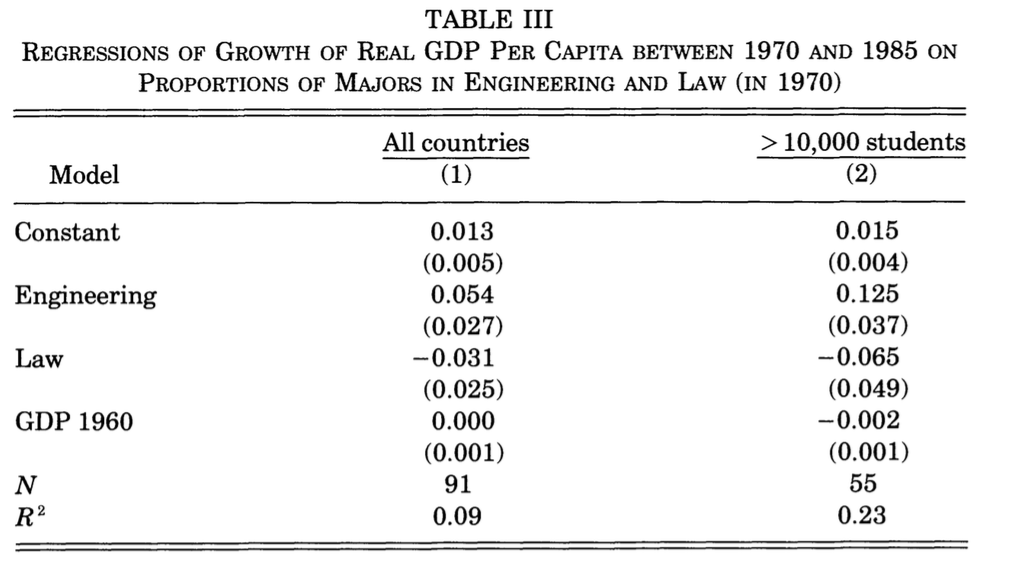1.6 — The Problem of Rent-Seeking
ECON 410 • Public Economics • Spring 2022
Ryan Safner
Assistant Professor of Economics
safner@hood.edu
ryansafner/publicS22
publicS22.classes.ryansafner.com
Profit-Seeking
Profit-Seeking
π=pqrevenues−(wl+rk)costs
The firm's costs are all of the factor-owner's incomes!
- Landowners, laborers, creditors are all paid rent, wages, and interest, respectively
Profits are the residual value leftover after paying all factors
Profits are income for the residual claimant(s) of the production process (i.e. owner(s) of a firm):
- Entrepreneurs
- Shareholders

Who Gets the Profits?
π=pqrevenues−(wl+rk)costs
Residual claimants have incentives to maximize firm's profits, as this maximizes their own income
Entrepreneurs and shareholders are the only participants in production that are not guaranteed an income!
- Starting and owning a firm is inherently risky!

Profits and Entrepreneurship
In markets, production must face the profit test:
- Is consumer's willingness to pay > opportunity cost of inputs?
Profits are an indication that value is being created for society
Losses are an indication that value is being destroyed for society
Survival for sellers in markets requires firms continually create value and earn profits or die

Profit Seeking: the Microeconomics I

Some assumptions to make the graph simple: C(q)=cq, i.e. the firm has no fixed costs, and constant marginal costs. See more information here.
Production generates economic surplus
In a competitive market in long run equilibrium, economic profit is driven to $0.
- p=AC(q)min, otherwise firms would enter/exit
- p=MC(q), allocatively efficient (goods produced until MB=MC)
- Consumer surplus and producer surplus is maximized
Profit Seeking: the Microeconomics II

Firms with market power will want to set q∗:MC(q)=MR(q) and raise price p∗
Still creates economic surplus
- Generates less consumer surplus than before
- Some surplus is captured as profit
- Some surplus is wasted as deadweight loss
Economic Rents
Economic Rent

Economic rent: a return on a resource above its normal market return (opportunity cost)
Has no allocative effect on resources, entirely “inframarginal”
A windfall that resource owners get for free
Economic Rent

Larry Bird
“I love this game so much, I’d play it for a dollar.”
Economic Rent
Recall market supply is the minimum willingness to accept, the minimum price necessary to bring a resource to market (its opportunity cost)
But all (equivalent) labor is paid the market wage, w∗ determined by market labor supply and labor demand

Economic Rent
Some workers would have accepted a job for less than w∗
These inframarginal workers earn economic rent in excess of what is needed to bring them into the market (their opportunity cost)

Economic Rent
Consider a factor (such as prime real estate) for which the supply is perfectly inelastic (e.g. a fixed supply)
Then the entire value of the land is economic rent!
The less elastic the supply of a factor, the more economic rent it generates!

Economic Rent
- There are some factors of production that are fixed in the economy:
- Managerial talent
- Worker talent
- Location
- First-mover advantage
- Technological secrets/IP
- License/permit access
- Political connections
- Lobbying

Economic Rent

Owners of these factors earn economic rents: returns higher than their opportunity cost (what is needed to bring them online, p>AC(q)
Economic rents arise from scarcity & relative differences between quality of these factors
In the short run, inframarginal firms using these scarce factors gain a cost-advantage (in short run)
Are Profits Rents?

In a competitive market, over the long run, profits are dissipated through competition
- Rival firms willing to pay for scarce factor to gain an advantage
The competition over these factors pushes up their prices (i.e. costs to firms purchasing this factor; squeezes profits to zero)
Economic Rent: Microeconomics IV

Firm’s perspective: rents are included in the opportunity cost (price) for inputs over long run
- Must pay a factor enough to keep it out of other uses
Factor owners (workers, landowners, inventors, etc) earn higher rents as higher payments for their services (wages, rents, interest, royalties, etc)
- Often induces competition to supply alternative factors, which may dissipate the rents
Rents and Rent-Seeking Behavior

- Alfred Marshall: in a competitive market, an “economic rent” depends on:
Time-period:
- Short run: inelastic factors (like capital) earn quasi—rents due to their being fixed
- Long run: these returns normalize to market return (zero excess profits)
Point of view:
- Firm’s point of view: these are costs of production that must be paid; and price-determined, i.e. rents must rise via competition to make dissipate profits to 0
- Society’s point of view: some factors really are fixed, and may earn excess returns that are price-determining, i.e. demand for fixed factor sets a high price
Quasi-Rents in Short Run


- If firms earn profit in short-run...
Quasi-Rents in Short Run


If firms earn profit in short-run...
More capital will flow into firm over long run, pushing profits to 0
- Also, more firms enter, pushing market price down
Quasi-Rents in Short Run


- If firms earn losses in short-run...
Quasi-Rents


If firms earn losses in short-run...
Capital will flow out of firm over long run in pursuit of normal profits, pushing losses to 0
- Also, firms will exit, pushing market price up
Quasi-Rents
Competitive industry in the long run: firms earn “normal economic profit” (of 0)
- all factors of production are paid their opportunity cost
Return to (fixed) capital in firm = opportunity cost of holding capital in firm (versus other investment opportunities)

Quasi-Rents
But in short run, when some factors are fixed (i.e. capital), if price > average cost:
Firm must pay its variable factors (variable costs) or else they will leave the firm
Revenues leftover go to fixed factors (fixed costs) i.e. capital
- In SR, these are fixed (perfectly inelastic supply)
- Capital earns “quasi-rents” because it is fixed
- Returns higher than its long-run equilibrium price (opportunity cost)
But these quasi-rents will be eroded away in the long run
- Firms bid for the scarce factors, raising its price to opportunity cost

Rent-Seeking
Rent-Seeking Behavior

Economic rent is a prize, a return above normal market return (opportunity cost)
The existence of economic rents breeds competition over the rents, which may or may not dissipate the value of the rent
This competition for rents is rent-seeking behavior: sinking costly resources (that you cannot get back!) into acquiring the economic rent
Rent-Seeking Behavior in Markets

The monopoly profits earned with market power are an economic rent
- This is the "prize" of market power
The whole point of market competition is that free entry will dissipate these economic rents; firm’s profits will fall to normal (zero)
Rent-Seeking Behavior in Politics

The key to success in politics is to promise to give away money for free
The problem is you cannot give away money for free even if you tried!
The promise of earning a rent breeds competition over the rents (rent-seeking)
Government Intervention Creates Rents I

Political authorities intervene in markets in various ways that benefit some groups at the expense of everyone else
- subsidies to groups (often producers)
- regulation of industries
- tariffs, quotas, and special exemptions
- tax breaks and loopholes
- conferring monopoly and other privileges
These interventions create economic rents for their beneficiaries by reducing competition
This is a transfer of wealth from consumers/taxpayers to politically-favored groups
Rent-Seeking I

Anne Kreuger
1934-
"In many market-oriented economies, government restrictions upon economic activity are pervasive facts of life. These restrictions give rise to rents of a variety of forms, and people often compete for the rents. Sometimes, such competition is perfectly legal. In other instances, rent seeking takes other forms, such as bribery, corruption, smuggling, and black markets."
"When quantitative restrictions are imposed upon and effectively constrain imports, an import license is a valuable commodity...It has always been recognized that there are some costs associated with licensing: paperwork, the time spent by entrepreneurs in obtaining their licenses, the cost of the administrative apparatus necessary to issue licenses, and so on. Here, the argument is carried one step further: in many circumstances resources are devoted to competing for those licenses," (p.848).
Kreuger, Anne, (1974), "The Political Economy of the Rent-Seeking Society," American Economic Review 84(4): 833-850
Rent-Seeking: The Ugly of Monopoly

The monopoly profits earned with market power are an economic rent
- This is the "prize" of market power
What if the market power is earned through political lobbying for an anti-competitive regulation?
Firm(s) willing to invest resources into the "competitive market" of creating and maintaining economic rents
Total loss to society =DWL+Rent-seeking (of all competitors!)
Rent-Seeking III

Gordon Tullock
1922-2014
"The rectangle to the left of the [Deadweight loss] triangle is the income transfer that a successful monopolist can extort from the customers. Surely we should expect that with a prize of this size dangling before our eyes, potential monopolists would be willing to invest large resources in the activity of monopolizing. In fact the investment that could be profitably made in forming a monopoly would be larger than this rectangle, since it represents merely the income transfer," (p.231).
Tullock, Gordon, (1967), "The Welfare Cost of Tariffs, Monopolies, and Theft," Western Economic Journal 5(3): 224-232.
Rent-Seeking IV

Gordon Tullock
1922-2014
"Entrepreneurs should be willing to invest resources in attempts to form a monopoly until the marginal cost equals the properly discounted return. The potential customers would also be interested in preventing the transfer and should be willing to make large investments to that end. Once the monopoly is formed, continual efforts to either break the monopoly or muscle into it would be predictable. Here again considerable resources might be invested. The holders of the monopoly, on the other hand, would be willing to put quite sizable sums into the defense of their power to receive these transfers," (p.231).
Tullock, Gordon, (1967), "The Welfare Cost of Tariffs, Monopolies, and Theft," Western Economic Journal 5(3): 224-232.
Again: Institutions Channel Self-Interest

"[Though] he intends only his own gain, and he is in this, as in many other cases, led by an invisible hand to promote an end which was no part of his intention…By pursuing his own interest he frequently promotes that of the society more effectually than when he really intends to promote it," (Book IV, Chapter 2.9).
Smith, Adam, 1776, An Enquiry into the Nature and Causes of the Wealth of Nations
Profit Seeking vs. Rent Seeking: Some Generalizations
| Profit-Seeking | Rent-Seeking |
|---|---|
| "market entrepreneurs" | "political entrepreneurs" |
| hire engineers | hire lawyers |
| use own/investor funds | use taxpayer funds |
| sell to consumers | sell to the State |
| face the profit test | don't face the profit test |
| earn profits or losses | earn rents |
| create surplus for consumers | creates artificial protection from competition |
| hopes to capture some of that surplus | captures rents from that artificial protection |
An American Story of Rent-Seeking vs. Profit-Seeking


Robert Fulton
Fulson, Burton, (2010), The Myth of the Robber Barons: A New Look at the Rise of Big Business in America, 6th ed.
An American Story of Rent-Seeking vs. Profit-Seeking

Edward Gibbons

Cornelius Vanderbilt
Fulson, Burton, (2010), The Myth of the Robber Barons: A New Look at the Rise of Big Business in America, 6th ed.
An American Story of Rent-Seeking vs. Profit-Seeking

Gibbons v. Ogden (1824)

John Marshall
1755-1835
"A right over [licenses and patents] has never been pretended to in any instance except as incidental to the exercise of some other unquestionable power. The present is an instance of the assertion of that kind, as incidental to a municipal power; that of superintending the internal concerns of a State, and particularly of extending protection and patronage, in the shape of a monopoly, to genius and enterprise. The grant to Livingston and Fulton interferes with the freedom of intercourse, and on this principle, its constitutionality is contested.(p. 22 US 229)
"If there was any one object riding over every other in the adoption of the Constitution, it was to keep the commercial intercourse among the States free from all invidious and partial restraints," (p. 22 US 231)
Gibbons v. Ogden, 22 U.S. 1 (1824) Justia Case Law
The Allocation of Talent Matters I
"A country's most talented people typically organize production by others, so they can spread their ability advantage over a larger scale. When they start firms, they innovate and foster growth, but when they become rent seekers, they only redistribute wealth and reduce growth. Occupational choice depends on returns to ability and to scale in each sector, on market size, and on compensation contracts. In most countries, rent seeking rewards talent more than entrepreneurship does, leading to stagnation. Our evidence shows that countries with a higher proportion of engineering college majors grows faster; wheras countries with a higher proportion of law concentrators grow more slowly," (p. 503)
Murphy, Kevin M, Andrei Shleifer, and Robert M. Vishny, (1991). "The Allocation of Talent: Implications for Growth," Quarterly Journal of Economics 106(2): 503-530
The Allocation of Talent Matters II

Murphy, Kevin M, Andrei Shleifer, and Robert M. Vishny, (1991). "The Allocation of Talent: Implications for Growth," Quarterly Journal of Economics 106(2): 503-530
Private Rent-Seeking?
Private Rent-Seeking I
The Rievers (1969) based on William Faulkner’s (1962) book
Private Rent-Seeking II


Private Rent-Seeking III
The Fundamental Transformation

Olvier Williamson
1932-
Economics Nobel 2009
A contract between two parties constitutes a "fundamental transformation" from ex ante competitive market to an ex post bilateral monopoly
- Two parties depend on one another's performance to jointly capture the gains from exchange
- Committing a factor of production into such a relationship is a specific investment, possibly sunk cost
Creates the possibility of post-contractual opportunism by the parties
The Fundamental Transformation

This bilateral dependency creates “quasi rents” from cooperation that might be appropriated by a party
Need to contract ex ante to protect ex post possibility of someone threatening to appropriate the rents
Inability to prevent this may cause parties to inefficiently avoid making agreements!
Appropriable Quasi-Rents

Benjamin Klein
1943-
"Coase's fundamental insight [was] that transaction, coordination, and contracting costs must be considered explicitly in explaining the extent of vertical integration...[We] explore one particular cost of using the market system-the possibility of postcontractual opportunistic behavior," (p.297)
"The particular circumstance we emphasize as likely to produce a serious threat of this type of reneging on contracts is the presence of appropriable specialized quasi rents. After a specific investment is made and such quasi rents are created, the possibility of opportunistic behavior is very real. Following Coase's framework, this problem can be solved in two possible ways: vertical integration or contracts," (p.298)
Appropriable Quasi-Rents

Benjamin Klein
1943-
"An appropriable quasi rent is not a monopoly rent in the usual sense, that is, the increased value of an asset protected from market entry over the value it would have in an open market. [It] can occur with no market closure or restrictions placed on rival assets. Once install, an asset may be so expensive to remove or so specialized to a particular user that if the price paid to the owner was somehow reduced the asset's services to that user would not be reduced," (p.299).
Appropriable Quasi-Rents

Benjamin Klein
1943-
"Because of transaction and mobility costs, 'market power' will exist in many situations not commonly called monopolies. There may be many potential suppliers of a particular asset to a particular user but once the investment in the asset is made, the asset may be so specialized to a particular user that monopoly or monopsony power, or both, is created," (p.299).
Klein, Benjamin, Robert G Crawford, and Armen A Alchian, 1978, "Vertical Integration, Appropriable Rents, and the Competitive Contracting Process," Journal of Law and Economics 21(2): 297-326
Asset Specificity

"Asset specificity": degree to which an asset has alternative valuable uses outside a particular use
- Or degree to which it loses value for other uses
General assets can easily be diverted to other productive uses for most or all of their value
- Very liquid: easily re-sold on thick markets for most of its value
- e.g. trucks, shipping containers, hammers, computers
Asset Specificity

- Specific assets have few alternative uses outside a specific use
- Illiquid: would sell for drastically lower than its value
- e.g. dyes, drill presses, designed to make a very specific output
Asset Specificity

Olvier E Williamson
1932-
Economics Nobel 2009
"Four types of asset specificity are usefully distinguished:
[1.] site specificity - e.g. successive stations that are located in a cheek-by-jowl relation to each other so as to economize on inventory and transportation expenses;
[2.] physical asset specificity - e.g. specialized dies that are required to produce a component;
[3.] human asset specificity that arises in a learning-by-doing fashion; and
[4.] dedicated assets, which represent a discrete investment in generalized...production capacity that would not be made but for the prospect of selling a significant amount of product to a specific consumer," (p. 95).
Asset Specificity: Example


Suppose one party owns a generic asset - trucks
- High opportunity cost - easily resold or put to other uses
Another party owns a highly specific asset - highly specialized machines
- Next best alternative use is a boat anchor
Asset Specificity: Example

Suppose a contract between them creates $50,000 of joint net value for the owner of the generic asset and the owner of the specific asset
Can't recontract until next year
Once the contract is signed, the owner of the generic asset threatens to pull out of the contract
- Demands $49,000 of the "quasirents of cooperation"
They Are Altering The Deal...
...Pray They Don't Alter it Any Futher
Asset Specificity: Example

Foreseeing such contractual hazards parties will be reluctant to cooperate
Or will choose a less specialized and less efficient technology
Vertical Integration

One solution to this problem is vertical integration: the firm internalizes a stage of production in the supply chain
- Often by buying its supplier
Avoids hold up problems and post-contractual opportunism
Vertical Integration

- Antitrust implications: vertical integration may not be done to intentionally create market power, but to economize on transaction costs from asset specificity
Vertical Integration

Benjamin Klein
1943-
"[A]s assets become more specific and more appropriable quasi rents are created (and therefore the gains from opportunistic behavior increases), the costs of contracting will generally increase more than the costs of vertical integration. Hence, ceterus paribus, we are more likely to observe vertical integration," (p.298).
Vertical Integration

Benjamin Klein
1943-
"We maintain that if an asset has a substantial portion of quasi rent which is strongly dependent upon some other particular asset, both assets will tend to be owned by one party," (p.300).
Klein, Benjamin, Robert G Crawford, and Armen A Alchian, 1978, "Vertical Integration, Appropriable Rents, and the Competitive Contracting Process," Journal of Law and Economics 21(2): 297-326
Vertical Integration

Benjamin Klein
1943-
"The primary alternative to vertical integration as a solution to the general problem of opportunistic behavior is some form of economically enforceable long-term contract," (p. 302).
Vertical Integration

Benjamin Klein
1943-
"Long-term contracts used as alternatives to vertical integration can be assumed to take two forms: (1) an explicitly stated contractual guarantee legally enforced by the government or some other outside institution, or (2) an implicit contractual guarantee enforced by the market mechanism of withdrawing future business if opportunistic behavior occurs...[However, they are] often very costly solutions. They entail costs of specifying possible contingencies and the policing and litigation costs of detecting violations and enforcing the contract in the courts..every contingency cannot be cheaply specified in a contract or even known and because legal redress is expensive..." (p.303)
GM and Fisher Body Example


GM and Fisher Body Example

Benjamin Klein
1943-
"The manufacture of dies for stamping parts in accordance with the above specifications [for a Mustang or Ford model] gives a value to these dies specialized to Ford, which implies an appropriable quasi rent in those dies...once the large sunk fixed cost of the specific investment in the dies is made, the incentive for Ford to opportunistically renegotiate a lower price at which it will accept body parts from the independent die owner may be large. Similarly, if there is a large cost to Ford from the production delay of obtaining an alternative supplier of the specific body parts, the independent die owner may be able to capture quasi rents by demanding a revised higher price for the parts. Since the opportunity to lose the specialized quasi rent of assets is a debilitating prospect, neither party would invest in such equipment. Joint ownership of designs and dies removes this incentive to attempt appropriation," (p.308).
GM and Fisher Body Example

Benjamin Klein
1943-
"[I]n 1919 General Motors entered a ten-year contractual agreement with Fisher Body for the supply of closed auto bodies. In order to encourage Fisher Body to make the required specific investment, this contract had an exclusive dealing clause whereby General Motors agreed to buy substantially all its closed bodies from Fisher. This exclusive dealing arrangement significantly reduced the possibility of General Motors acting opportunistically by demanding a lower price for the bodies after Fisher made the specific investment in production capacity,"
GM and Fisher Body Example

Benjamin Klein
1943-
"But large opportunities were created by this exclusive dealing clause for Fisher to take advantage of General Motors, namely to demand a monopoly price for the bodies. Therefore, the contract attempted to fix the price which Fisher could charge for the bodies supplied to General Motors...The price was set on a cost plus 17.6 per cent basis [and had other provisions to protect GM]."
GM and Fisher Body Example

Benjamin Klein
1943-
"Unfortunately, however, these complex contractual pricing provisions did not work out in practice. The demand conditions facing General Motors and Fisher Body changed dramatically over the next few years. There was a large increase in the demand for automobiles and a significant shift away from open bodies to the closed body styles supplied by Fisher. Meanwhile, General Motors was very unhappy with the price it was being charged by its now very important supplier, Fisher...By 1924, General Motors had found the Fisher contractual relationship intolerable and began negotiations for purchase of the remaining stock in Fisher Body, culminating in a final merger agreement in 1926," (pp.309-310).
Klein, Benjamin, Robert G Crawford, and Armen A Alchian, 1978, "Vertical Integration, Appropriable Rents, and the Competitive Contracting Process," Journal of Law and Economics 21(2): 297-326